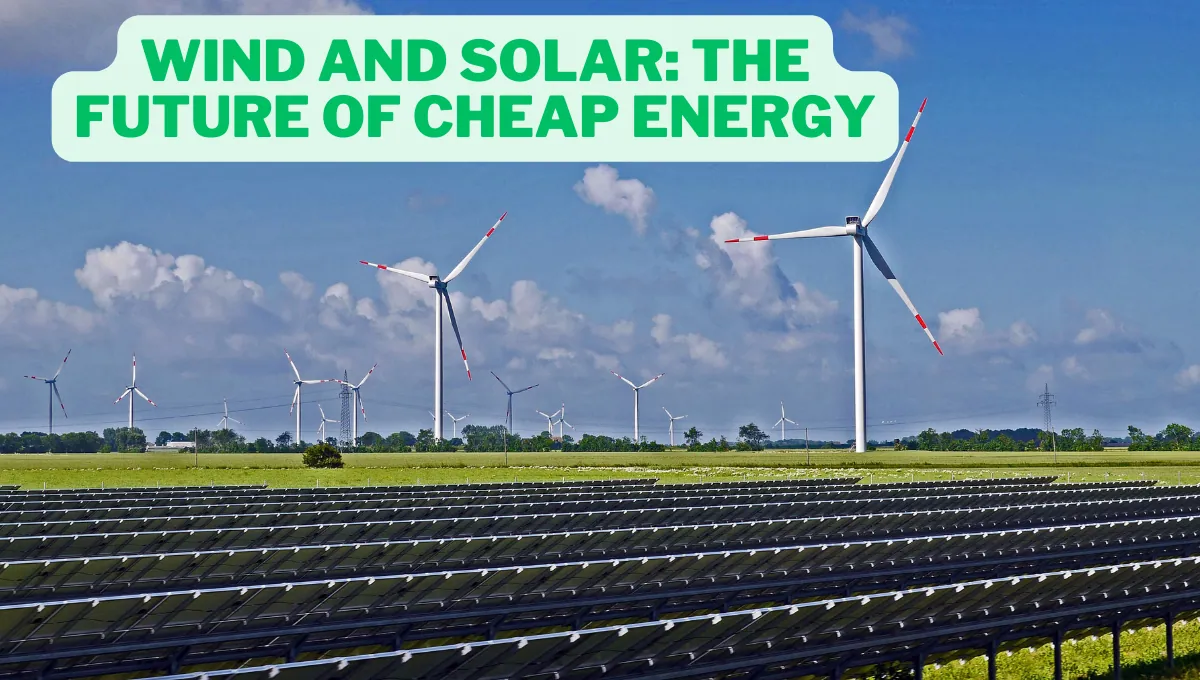As the world grapples with the pressing need for sustainable and cost-effective energy solutions, the findings from Lazard’s 2024 report highlight the growing economic viability of renewable energy sources.
Wind and solar power are now not only environmentally friendly but also more affordable than traditional fossil fuels and nuclear energy.
This shift is revolutionizing the energy sector, paving the way for a cleaner and more cost-efficient future.
Onshore Wind: The Cheapest Form of Energy
According to Lazard’s 2024 Levelized Cost of Energy (LCOE) analysis, onshore wind energy is currently the most cost-effective form of electricity generation.
The LCOE for onshore wind varies globally between $27 and $73 per megawatt-hour (MWh), averaging around $50/MWh depending on local conditions.
This significant cost advantage makes wind power a leading contender in the renewable energy market.
The Impact of Energy Storage on Wind Power Costs
When the additional costs of energy storage are included, the LCOE for wind energy ranges from $45 to $133/MWh.
Despite this increase, wind energy remains substantially cheaper than coal, which has an LCOE ranging from $69 to $168/MWh.
Wind energy also competes well with combined cycle gas, which has an LCOE between $45 and $108/MWh.
This competitiveness underscores the potential for wind energy to dominate future energy markets.
Utility-Scale Solar: A Cost-Effective Alternative
Utility-scale solar power is another renewable energy source that has seen significant cost reductions.
The LCOE for large-scale solar projects ranges from $29 to $92/MWh, with an average of $61/MWh.
This makes solar power more than half the cost of coal, offering a highly economical alternative for electricity generation.
Solar Power with Energy Storage
When energy storage is factored in, the LCOE for utility-scale solar ranges from $60 to $210/MWh.
While this increases the overall cost, it remains competitive, especially when compared to the high costs of nuclear power.
The versatility and declining costs of solar power continue to make it an attractive option for meeting growing energy demands.
The Rising Costs of Nuclear Power
Contrasting sharply with the decreasing costs of wind and solar, nuclear power has seen a significant increase in its LCOE.
In 2024, the cost of nuclear energy averages $182/MWh, with a range between $142 and $222/MWh.
This is more than double the cost since it hit a low of $95/MWh in 2011.
The high costs and complexities associated with nuclear energy make it a less favorable option in the current energy landscape.
Energy Storage: A Growing Necessity
Lazard’s report also highlights the increasing importance and value of energy storage systems (ESS).
As grid operators adopt new methodologies to integrate and value these resources, the role of energy storage is becoming more prominent.
In 2024, the ninth version of Lazard’s Levelized Cost of Storage Comparison finds that longer-duration ESS applications offer better value for money.
Stand-alone 100MW four-hour battery systems are the most cost-effective, with costs ranging from $170 to $296/MWh, excluding available US subsidies.
The Future of Energy Storage
Energy storage is set to become a critical component of the energy sector.
As the technology becomes more widespread and well-understood, its role in balancing supply and demand, enhancing grid stability, and supporting the integration of renewable energy sources will grow.
This will lead to increased transaction activity and a stronger classification of ESS as a valuable asset class.
The Competitive Edge of Renewables
Despite macroeconomic pressures such as high interest rates, Lazard’s 2024 LCOE+ report emphasizes that renewables continue to be cost-competitive with conventional generation methods.
This cost competitiveness is driving the ongoing displacement of fossil fuels and fostering a more sustainable energy sector.
Key Takeaways from Lazard’s 2024 Report
- Stable Averages: Year-over-year averages for the cost of renewables remain relatively stable, ensuring consistent affordability.
- Diverse Generation Fleets: There is a growing need for diverse energy generation fleets to meet increasing power demands driven by advancements in technology and infrastructure, such as AI and data centers.
- Innovation Impact: Continued innovation is essential for the future of the energy sector. Advances in technology and methodologies will further enhance the efficiency and cost-effectiveness of renewable energy sources.
Conclusion
Wind and solar energy are shaping up to be the future of cheap energy.
The findings from Lazard’s 2024 report highlight the economic advantages of these renewable sources over traditional fossil fuels and nuclear power.
As technology advances and energy storage solutions become more integrated, the cost-effectiveness and reliability of renewable energy will only improve.
The transition to wind and solar power is not just a step towards a more sustainable future but also a financially prudent choice.
With lower costs and competitive pricing, renewables are poised to lead the global energy market, providing clean, affordable, and reliable power for generations to come.
